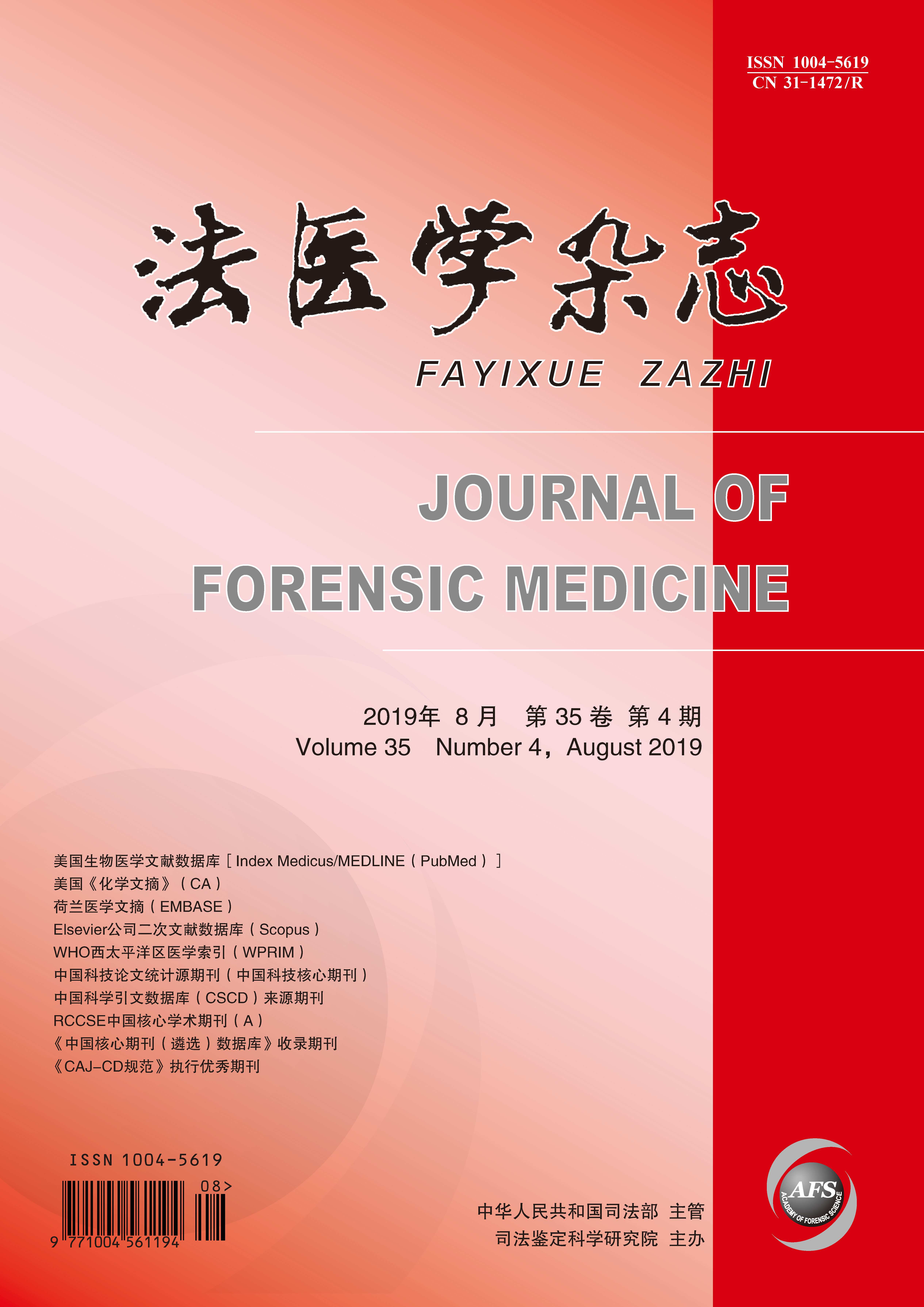|
|
Relationship between Electrical Conductivity and Related Biochemical Indicators of Rat Cerebrum Tissues and Postmortem Interval#br#
SUN Kai, ZHENG Zhe, LI Yong-lin,et al
2019, 35(4):
393-395,401.
DOI: 10.12116/j.issn.1004-5619.2019.04.002
Objective To explore the relationship between the electrical conductivity (EC) and biochemical indicators of rat cerebrum tissues and postmortem intervals (PMIs) and discuss the mechanism of applying EC to infer PMI. Methods Forty healthy Sprague-Dawley rats were sacrificed and stored in an environment of about 25 ℃. The whole cerebrum tissues of rats were removed respectively at different PMIs of 0, 1, 2, 3, 4, 5, 6, and 7 d, and then made into homogenized impregnation solution. The EC and related biochemical indicators (potassium, sodium, chloride, calcium, inorganic phosphorus, magnesium, uric acid, urea nitrogen and creatinine) in cerebrum tissue impregnation solution were determined, and the relationships among EC in impregnation solution, related biochemical indicators and PMI were analyzed. Results The EC in cerebrum tissues increased gradually with the extension of PMI, and the content of uric acid, urea nitrogen and inorganic phosphorus in its impregnation solution also increased gradually with the extension of PMI. The correlation of EC, uric acid, urea nitrogen, and inorganic phosphorus with PMI was relatively good (R2 was 0.95-0.99), and there was a linear correlation between the content change of uric acid, urea nitrogen, inorganic phosphorus and EC (R2 was 0.97-0.99). The changes of the other 6 kinds of biochemical indicators with the extension of PMI within 7 d after the rats’ death were non-significant (P>0.05). Conclusion The correlation between EC in cerebrum tissues, uric acid, urea nitrogen, inorganic phosphorus and PMI were relatively good, and combining various indicators can also improve the accuracy of PMI estimation.
Related Articles |
Metrics
|


